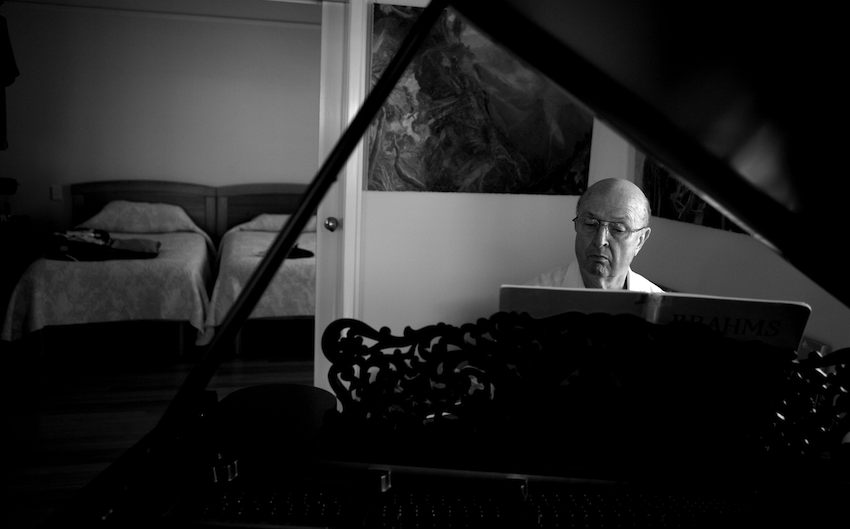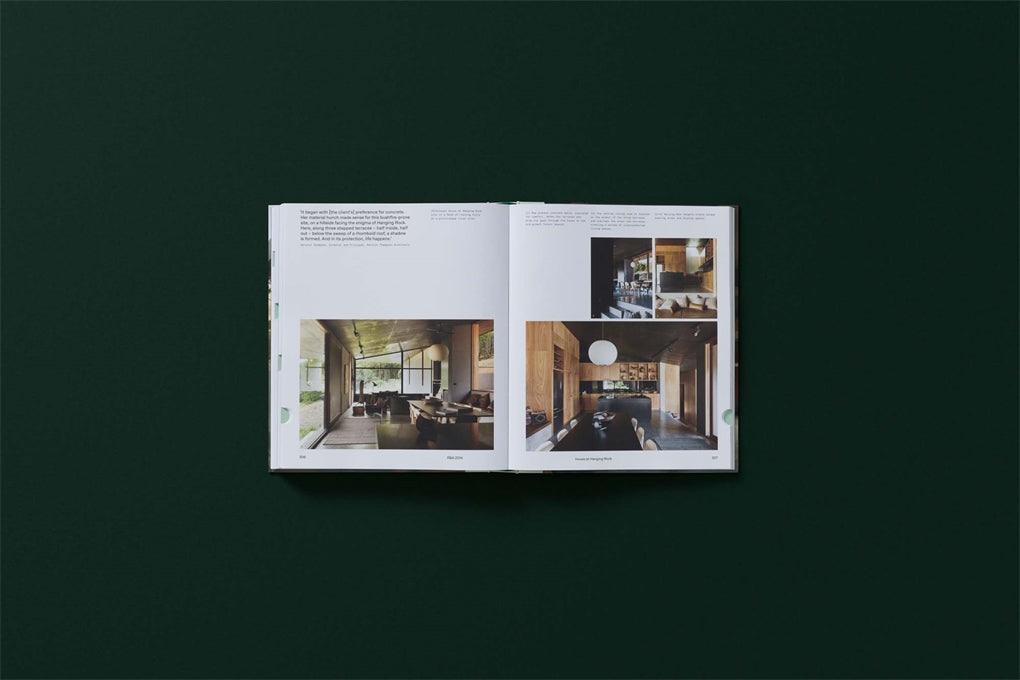William Francis Robinson
16 April 1936 – 26 August 2025
It is with deep sadness that we mark the passing of William Robinson, widely recognised as one of Australia's most important contemporary artists, and the subject of one of Piper Press's monographs, produced by Margaret Bishop and John Dunn and published in association with QUT in 2011.
Born in Brisbane, and eventually to become known for his vast landscape paintings, Archibald winning portraits, beautiful ceramics, and even early Bonnard-inspired interiors and still life works, Robinson began his career teaching art.
Locality is important to Robinson and even his most transcendent late twentieth century works have their starting point a deeply felt connection with his own environment. Deborah Hart
He was an accomplished pianist by the age of 13, and used to enter Peter's Ice Cream competitions which would allow him to win money and keep paying for his music lessons. After leaving school he began training as a primary school teacher in 1953. He undertook art teacher training in 1955 but not long after, proved to be a skilled painter winning the Godfrey Rivers Memorial Medal for excellence in painting, sculpture, drawing and applied arts (1957).
He was a finalist in the ABC's annual Concerto and Vocal Competition around the age of 21 but found stage life traumatic with the rehearsals and requirements of relying on memory, fast pace and stress. Nevertheless, he continued to play piano privately throughout his life.
His early work and solo exhibition of 1967 was influenced by French painter Pierre Bonnard and in 1969 by German-Swiss expressionist Paul Klee who also had a strong relationship to music. The 1970s and 80s saw whimsical, almost folk-like paintings of fam life with portraits of his cows, and himself.
|
 William Robinson with his Self Portrait with stunned mullet (1995), winner of the 1995 Art Gallery of New South Wales Archibald Prize. (Sydney Morning Herald, Photo by James Alcock). |
His frequent inclusion in the Archibald Finalists line up between 1983 and 1995 is notable for someone who had only painted seven portraits, all of himself. Michael Brand wrote that Robinson found himself in the middle of a debate about portraiture, and later - when he had moved onto landscapes - about how contemporary masterpieces could be defined.
Robinson twice won the Archibald Prize. First in 1987 for Equestrian self portrait and then in 1995 for Self Portrait with stunned mullet.
By the late 80s, Robinson moved from the farm to the rainforest, both in his art and in relocating to a number of rural areas with his family over the years, including Birkdale outside Brisbane, and later Beechmont and Kingscliff.
Like much of the history of non-Indigenous Australian art, Robinson's oeuvre represents a trying to come to terms with the Australian bush. Hannah Fink
It wasn't until he gave up teaching in 1989, that he was able to paint full-time at the age of 53. Even part time, he reportedly painted nearly every day.
One of William Robinson's most breathtaking works is the Creation series. Creation landscapes: Fountains of the earth (2002), a large work depicting the rainforest in an immense detail in both ancient and still-growing state and acquired by the National Gallery of Australia. Robinson's sketchbook and notes for the series demonstrate careful thought about how the integral aspects of space, sky, cloud, the earth, movement and separation are all interrelated, making his response to the natural environment both vivid and mysterious, luminous and transcendent.
|
William Robinson, sketchbook notes for Creation landscape: Fountains of the earth.
 Town and Country, glazed stoneware, William Robinson, 1993. |
Robinson's painting, drawing, sculpture and ceramic works have been exhibited in solo and group exhibitions. Of his work and approach, Robinson said:
Every place that we've ever lived has really affected my work', Robinson has stated. 'My work is a total reflection of my life, and these places have sometimes been difficult but they have been of extreme importance because they have given me an individuality … rather than a recipe which must be followed, or fashion or anything like that. I abhor fashion: I could never become a fashion model and nor could I become a fashionable painter, because I just do what I am.
William Robinson
In addition to winning the Archibald Portrait Prize twice, he was a Wynne Prize Winner twice. First in 1990 for The rainforest, and then in 1996 for Creation landscape: earth and sea.
Art critic John McDonald wrote that Robinson 'is the only non-Aboriginal artist since Fred Williams and John Olsen to give us an entirely new view of the Australian landscape.'
Robinson was awarded an AO (Order of Australia) in 2007 and three honorary doctorates. In 2009, The William Robinson Gallery opened at Old Government House in Brisbane in at Queensland University of Technology’s Gardens Point campus.
William Robinson: The Transfigured Landscape published in partnership with QUT in 2011 to coincide with the exhibition of the same name, included essays by Deborah Hart, David Malouf, Desmond MacAulay and Bettina MacAulay, Hannah Fink and Michael Brand.
QUT writes: Robinson’s work is held in all major Australian public art museums as well as in the Metropolitan Museum of Art, New York, the Vatican Museums, Vatican City, and the British Museum, London.
Beyond his artistic achievements, Bill was known for his self-deprecating humour and quiet humility, qualities that made him not only admired but deeply respected by those who had the privilege of working with him or being taught by him. He was, unfailingly, a pleasure to collaborate with and will be missed. QUT
Our thoughts are with William Robinson's family and friends at this time.
 William Robinson, Photographed by Greg Weight 1994.
|






 Creation landscape: Fountains of the earth, William Robinson, 2002.
Creation landscape: Fountains of the earth, William Robinson, 2002.




